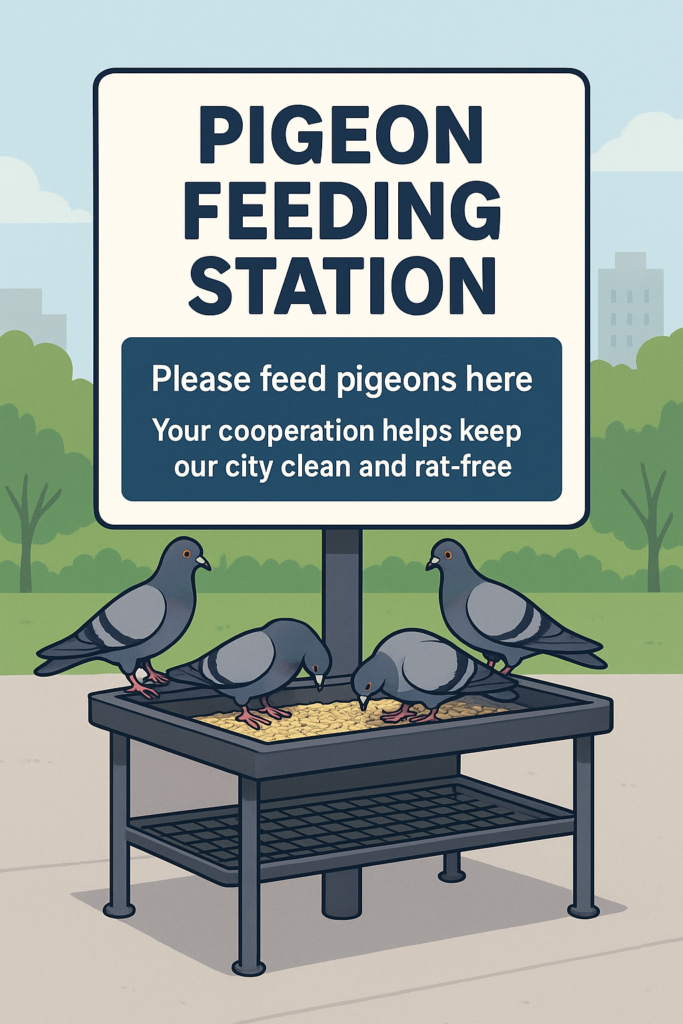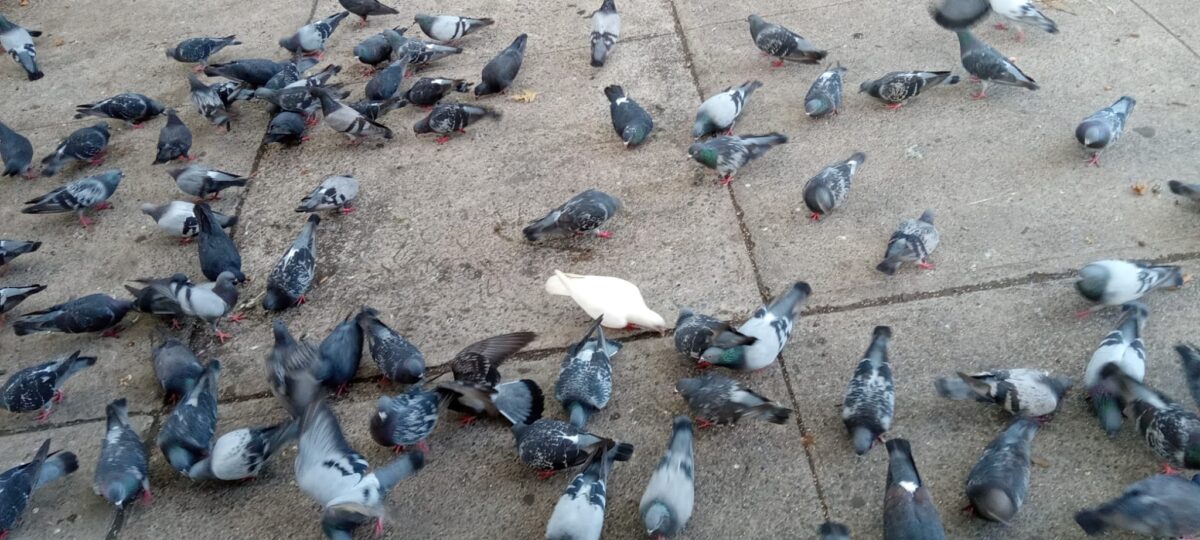On a breezy afternoon at 96th and Broadway, a woman with a shopping bag full of bread crusts stands at the corner, scattering handfuls onto the pavement. Within seconds, pigeons swoop in, wings fluttering, heads bobbing, their iridescent feathers glinting in the sun. Children stop to point. Passersby smile or frown, depending on their mood.
But when the pigeons have had their fill, scraps of bread remain. And as evening falls, another New York regular shows up: rats. They scurry out of subway grates and planters, taking over the feast the birds left behind.
This cycle — pigeons by day, rats by night — has become a familiar rhythm in many neighborhoods. And it raises an uncomfortable question: can we celebrate pigeons without feeding rats? This question has become increasingly urgent, given the fact that Gale Brewer (a local leader) appears to be dead set against any future feeding of the birds (despite the fact that pigeons, unless fed every three days, will likely die of starvation).
Remember the Dog Waste Problem?
If you lived in New York in the 1970s, you remember. Sidewalks were minefields of dog feces. Everyone complained, but no one thought it could change — until it did. The “pooper scooper law” and the creation of dog runs transformed the city. What was once a nuisance became a story of civic success.
Today, advocates believe it’s time for a similar solution — this time for pigeons.
A Fresh Idea: Pigeon Feeding Stations
Instead of fighting pigeon feeders, why not give them a better place to do it?

A very simple idea for a pigeon feeding station. An actual prototype would likely have to include more rat-proofing features. Additionally, human resources (likely volunteers) would likely need to be deployed to regularly clean around the stations.
Pigeon Feeding Stations would be small, designated areas in parks or plazas where people could feed pigeons safely and responsibly. Picture a raised platform, rat-proof by design, with a simple seed dispenser and a sign explaining why it matters. Clean, controlled, and even educational.
Why It Works
- Keeps sidewalks cleaner by moving food away from street corners.
- Cuts into rat populations by eliminating one of their favorite midnight buffets.
- Preserves tradition by giving New Yorkers and tourists a place to feed pigeons without guilt.
- Celebrates culture by acknowledging pigeons as part of the city’s character — just as much as the High Line’s new pigeon statue or the wild parrots of Brooklyn.
Why Bird Lovers Should Care
A Small Pilot, A Big Payoff
Imagine starting with just a few stations: say, 96th & Broadway, Union Square, and Chinatown. Places where pigeons already gather and feeders already show up daily. With modest investment, New York could try something new: a humane, practical approach that keeps everyone happy: birds, people, and yes, even sanitation workers.
At BrooklynParrots.com, we’ve always argued that New York is at its best when it embraces the wildlife that shares our streets. The monk parakeets in Brooklyn, the red-tailed hawks in Manhattan, and yes, the ever-present pigeons — they’re all part of the fabric of city life.
Pigeon Feeding Stations aren’t about taking that away. They’re about making it sustainable.
The Big Picture
It’s easy to roll your eyes at pigeons. But think about it: in the 1970s, people laughed at the idea that New Yorkers would ever clean up after their dogs. Forty years later, we can’t imagine the city without dog runs.
Pigeon Feeding Stations could be the same kind of civic breakthrough — a way to solve a sanitation problem while preserving something that brings people joy.
So the next time you pass the pigeon lady at 96th Street, imagine her in a different setting: standing in a clean, well-marked corner of a park, pigeons flocking overhead, children laughing, and no rats waiting for leftovers at night.
That’s the future we should build. I plan to submit this proposal to mayoral candidate Curtis Sliwa (who appreciates the pigeons more than any other NYC politician I know of) and hope both that he is elected and that he can bring this project to fruition.
If you are interested in receiving more details on my proposal, please send email to stephencarlbaldwin <AT>gmail.com.

